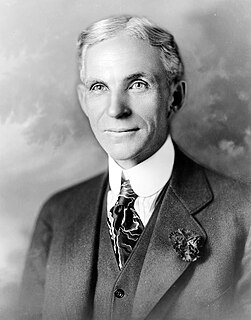
Henry Ford was an American industrialist, business magnate, founder of the Ford Motor Company, and chief developer of the assembly line technique of mass production. By creating the first automobile that middle-class Americans could afford, he converted the automobile from an expensive luxury into an accessible conveyance that profoundly impacted the landscape of the 20th century.

Thomas Alva Edison was an American inventor and businessman. He developed many devices in fields such as electric power generation, mass communication, sound recording, and motion pictures. These inventions, which include the phonograph, the motion picture camera, and early versions of the electric light bulb, have had a widespread impact on the modern industrialized world. He was one of the first inventors to apply the principles of organized science and teamwork to the process of invention, working with many researchers and employees. He established the first industrial research laboratory.

Dearborn is a city in Wayne County in the U.S. state of Michigan. At the 2020 census, it had a population of 109,976. Dearborn is the seventh most-populated city in Michigan and is home to the largest Muslim population in the United States per capita. It also is home to the largest mosque in the United States.
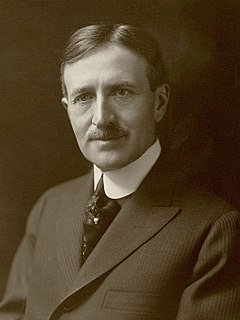
Harvey Samuel Firestone was an American businessman, and the founder of the Firestone Tire and Rubber Company, one of the first global makers of automobile tires.
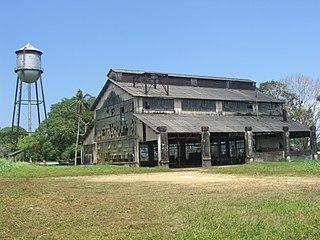
Fordlândia is a district and adjacent area of 14,268 square kilometres (5,509 sq mi) in the city of Aveiro, in the Brazilian state of Pará. It is located on the east banks of the Tapajós river roughly 300 kilometres (190 mi) south of the city of Santarém.

The Henry Ford is a history museum complex in the Detroit suburb of Dearborn, Michigan, United States. The museum collection contains the presidential limousine of John F. Kennedy, Abraham Lincoln's chair from Ford's Theatre, Thomas Edison's laboratory, the Wright Brothers' bicycle shop, the Rosa Parks bus, and many other historical exhibits. It is the largest indoor–outdoor museum complex in the United States and is visited by over 1.7 million people each year. It was listed on the National Register of Historic Places in 1969 as Greenfield Village and Henry Ford Museum and designated a National Historic Landmark in 1981 as "Edison Institute".
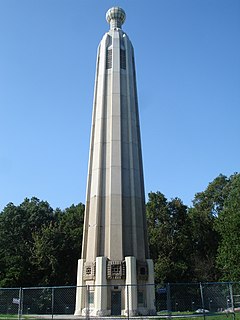
The Thomas Edison Center at Menlo Park, also known as the Menlo Park Museum / Edison Memorial Tower, is a memorial to inventor and businessman Thomas Alva Edison, located in the Menlo Park area of Edison, Middlesex County, New Jersey. The tower was dedicated on February 11, 1938, on what would have been the inventor's 91st birthday.
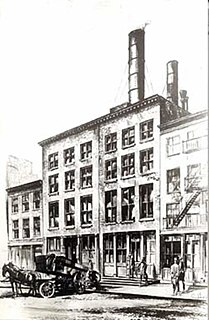
Pearl Street Station was the first commercial central power plant in the United States. It was located at 255–257 Pearl Street in the Financial District of Manhattan, New York City, just south of Fulton Street on a site measuring 50 by 100 feet. The station was built by the Edison Illuminating Company, under the direction of Francis Upton, hired by Thomas Edison.
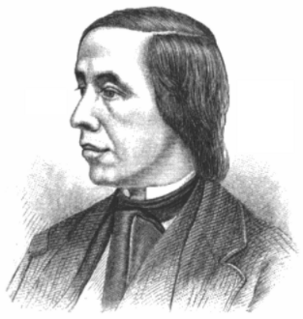
Moses Gerrish Farmer was an electrical engineer and inventor. Farmer was a member to the AIEE, later known as the IEEE.
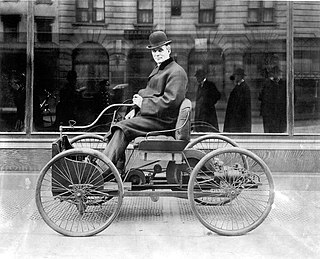
The Ford Quadricycle was the first vehicle developed by Henry Ford. Ford's first car was a simple frame with a gas-powered engine and four bicycle wheels mounted on it.
The Edison Pioneers was an organization composed of former employees of Thomas Edison who had worked with the inventor in his early years. Membership was limited to people who had worked closely with Edison before 1885. On February 11, 1918, the Edison Pioneers met for the first time, on the 71st birthday of Edison. There were 37 people at the first meeting. Edison himself was not present; it was announced he was "engaged in important government service". It was suspected he was working on a military project since World War I was still in progress. The organization had 100 members although in later years descendants of Edison Pioneers were also allowed membership.
The firm of Hooven, Owens, Rentschler, and Company manufactured steam and diesel engines in Hamilton, Ohio. Because the firm was frequently known by its initials, H.O.R., the Hooven is sometimes incorrectly rendered as Hoover, and the Owens may be mistaken for Owen.

Francis Jehl was a laboratory assistant of Thomas Edison. Jehl studied chemistry at Cooper Union at night. After finishing school at the age of 18, he went to work for Edison at Menlo Park. In 1882, Jehl went to Europe to introduce the Edison light system in the various European countries. Jehl wrote a book titled Reminiscences of Menlo Park based on a diary of his experiences at the laboratory.

The Dearborn Inn, A Marriott Hotel, is a luxurious historic hotel, conceived by Henry Ford, who saw a need for food and accommodations for visitors flying into the nearby Ford Airport, making it one of the first airport hotels. It is located in Metro Detroit at 20301 Oakwood Boulevard in the suburban city of Dearborn, Michigan near The Henry Ford and the world headquarters building of Ford Motor Company. Albert Kahn designed the Dearborn Inn in the Georgian architectural style. The Dearborn Inn is owned by Ford Motor Land Development Corporation and managed by Marriott International.

Armington & Sims Engine Company was a manufacturer of steam engines located in Providence, Rhode Island. It was established in 1881 by Pardon Armington and Gardner C. Sims. The factory was located at the corner of High Street near Knight in Providence.

Greg Grandin is a professor of history at Yale University. He previously taught at New York University. He is author of a number of books, including Fordlândia: The Rise and Fall of Henry Ford's Forgotten Jungle City, which was a finalist for the Pulitzer Prize for History, as well as for the National Book Award and a National Book Critics Circle Award. A more recent book, entitled, Who Is Rigoberta Menchú?, focuses on the treatment of the Guatemalan Nobel Peace Prize winner. His 2014 book, The Empire of Necessity: Slavery, Freedom, and Deception in the New World, is a study of the factual basis for the novella Benito Cereno by Herman Melville.

Greenfield Village was an Amtrak station in Dearborn, Michigan served by the Wolverine. It closed to regular seasonal service in 2006 and to all service in 2014. The station had a single side platform serving one of the two tracks of the Michigan Line. A pedestrian crossing from the platform led to The Henry Ford at Smiths Creek Depot on the parallel Weiser Railroad.

The Edison State Park is located in the Menlo Park section of Edison, New Jersey. It is located on Christie Street, the first street in the world to be lit up by lightbulb, just off Lincoln Highway, near the Metropark Train Station. It covers a total area of 37 acres (0.15 km2). The park commemorates the site where the famous inventor Thomas Alva Edison had his Menlo Park laboratory. In his laboratory, Edison invented over 600 inventions such as the incandescent electric light and the phonograph, the latter being the first object to record and play sound.
Henry Ford House may refer to:
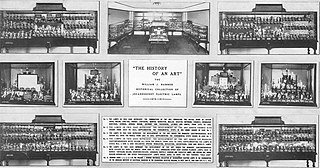
The Hammer Historical Collection of Incandescent Electric Lamps was an exhibit of early electric light bulbs and was collected by William Joseph Hammer. The collection of lamp bulbs is the most comprehensive known in the world. It shows the technology development of the filament electric light bulb during Thomas Edison's lifetime. Hammer's collection was displayed for years in five glass cases at the Headquarters of the American Institute of Electrical Engineers in New York City. It is now housed at The Henry Ford Museum in Dearborn, Michigan.
















